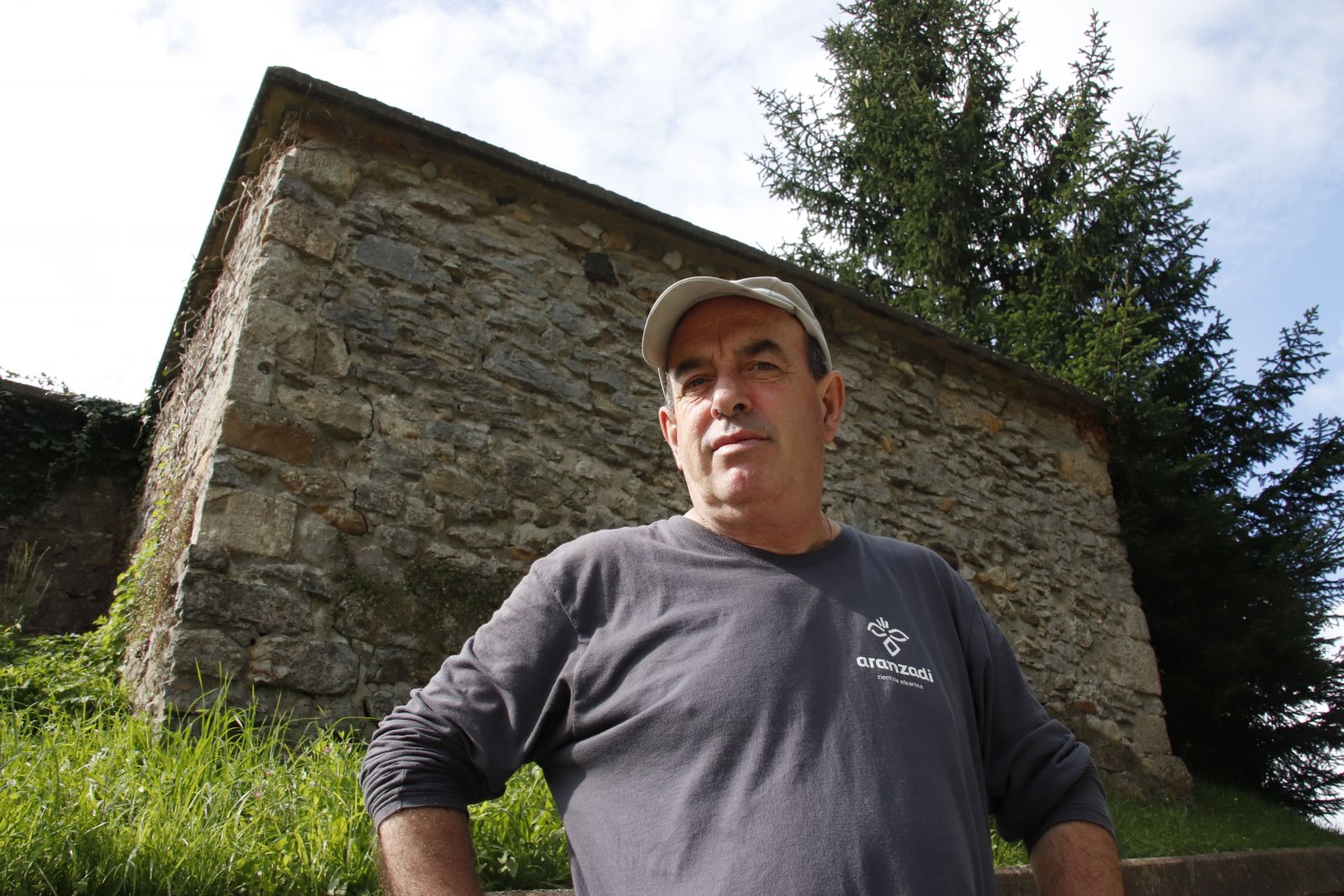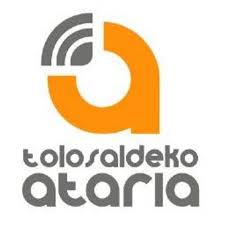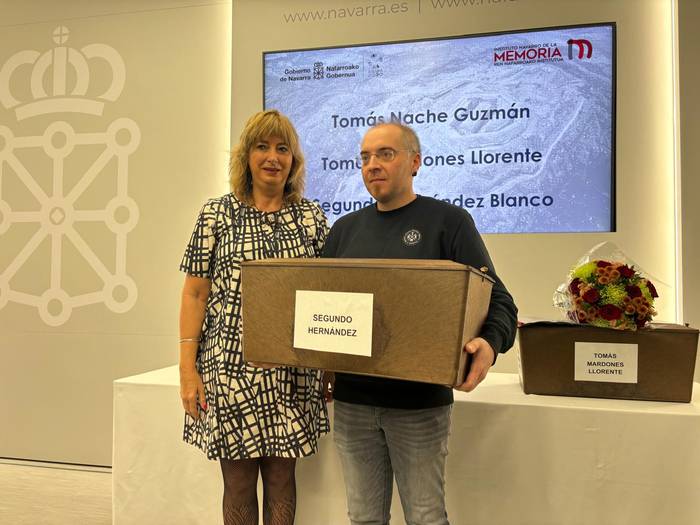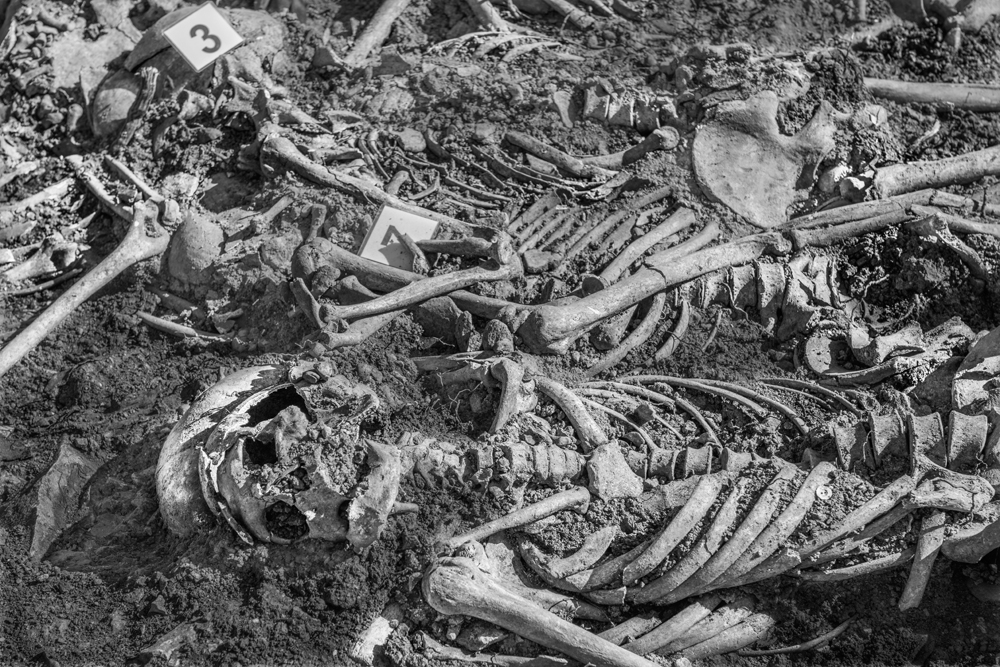Excavations in the cemetery of Aduna
- In October 1936, members of the Society of Aranzadi Sciences went to the cemetery of the town shooting on the side of the road and searched for a dead body buried in the cemetery. Bones extracted from the osarus have been placed within the research of the Saseta defense system indusketa.Adunako

With the support of the municipalities of Aduna, Zizurkil, Asteasu and Larraul and the collaboration of the Human Rights Directorate of the Provincial Council of Gipuzkoa, the Society of Sciences Aranzadi has been analyzing the Saseta defense system since 2013. As part of the initiative, work camps are organised each year and 12 volunteers have participated this year in Mount Azarolatxiki in Zizurkil, on the plots of Eskaltzu.
The work has spread throughout the trenches to seven metres high and has, above all, identified ammunition. In addition to the war material, cans, leather pieces, buttons, bottles and pieces of wood have also been collected. This year, within the fields of work a new line has been worked and in the attempt to recover the historical memory, with the aim of investigating human rights violations in the context of the War of 36, the excavations have been extended to the cemetery of Aduna.
The work has been led by Dr. Karlos Almorza of the Society of Sciences Aranzadi, and he has counted on the collaboration of Jose Luis Iraola Puskas and Jexux Bidaola Txirrita.Han were the ones who guided the volunteers of the work fields performing excavations in the cemetery. However, they did not start from scratch.
.jpg)
"We found a document signed on October 17, 1936 by José Andrés Vicuña Aranburu, pastor of the people of the time. Vicuña gives permission to bury in the cemetery an unidentified corpse found the day before on a village road and specifies that the deceased has a head full of shots," said Almorza.

The members of the Aranzadi Society of Sciences have carried out a study in the cemetery throughout the month of July (see here the evolution of the work, day by day). Two osariums have been found. "One of them is the officer within the boundaries of the cemetery, that of Catholics. The other, on the other hand, is outside the cemetery and there they are supposed to bury the unbaptized and the reds," Aranzadi said.

The most important work has been carried out in the official ossary. The trees, which were inside the enclosure, have been recovered with their removal.
About 25 years ago, the Aduna cemetery was urbanized and steps were taken between the graves. The remains of the graves that were removed after the arrangement were deposited in the ossary.
"We examined one by one the bones and removed those that could be affected by a shot, as the document found indicates that the head of the person buried there was AIDS with gunshots," said Almorza.

The remains were examined on July 24 by forensic doctors Lourdes Herrasti and Paco Etxeberria, members of the Society of Aranzadi Sciences, anthropologists and specialists in bone archaeology. "They are the experts and at first sight we were told that no signs of possible gunshot wounds had been found in the bones. However, some of these bones have been transferred to the laboratory for further study and analysis. Sometimes you find what you're looking for and others don't. If the body we're looking for isn't in the official ossary, it may be in the outside graveyard."
Aranzadi members do not know who they are looking for: "We don't know who was found with a shot at the head of the road, but we know he was buried in this Aduna cemetery. As for historical memory and democratic memory, it is important to note that there are still bodies that we have not found and that we do not know where they are. Among them is the former mayor of Villabona, Valerian Saizar. We know he was killed on 10 October 1936, but we don't know exactly where he was abandoned. What we were looking for in Aduna was found 7 days later."
Members of Aranzadi have completed the first phase of excavations, once the bones have been returned to the ossary of the cemetery and covered with land. "These works have served to demonstrate to young people who have participated in fields of work that they cannot always get right in the former. Our work consists of a constant effort. Three out of ten will get results, but it is important to make visible all the work behind it".

They are not to despair Almorza, Iraola and Bidaola. They have shown their readiness to excavate the second ossary outside the cemetery. "We have only had time to withdraw a portion of the land that has accumulated in the world for years. There are several weeks of work to clean the second osarium. We think it's worth trying, and we think that the corpse we're looking for might be there.
They've had more surprises, and by chance, researchers have made more important discoveries. In Aduna, they've found the end of the thread.
Segundo Hernandez preso anarkistaren senide Lander Garciak hunkituta hitz egin du, Ezkabatik ihes egindako gasteiztarraren gorpuzkinak jasotzerako orduan. Nafarroako Gobernuak egindako urratsa eskertuta, hamarkada luzetan pairatutako isiltasuna salatu du ekitaldian.
Francoren heriotzaren ondoren, 1936ko fusilatuen senideak haien gorpuak berreskuratzen hasi ziren Nafarroan. Hasierako desobiratze haiek ezkutuan egin ziren, erakundeen laguntzarik gabe; hainbat herritar eta apaiz konprometituren ekimena izan zen, Ollakarizketako hobian 1979an... [+]






















